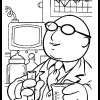Hi everyone,
Hope you are all having a wonderful day. I have recently came upon an issue with our cleaning procedure. We have aluminum mixing paddles that we use to prepare the dough for regular (with eggs) and vegan (without eggs) products. We regularly do egg analysis to ensure that there is no egg residue after cleaning the mixing paddles between vegan and regular days.
Recently we have come into an issue where the test is positive. Our cleaning procedures have not changed and everything is the same. I know aluminum surfaces are porous, and I want to know if there is an efficient way to throughly clean those paddles. We currently remove all dough residues from them, soak them in hot/warm water with soap, use a dedicated towel/sponge/scrub for cleaning and we than rinse and let them dry before sanitizing them.
Any suggestions will for cleaning will help. As of right now, we will get more paddles to have dedicated ones for each products (vegan and regular). But I would still like to receive some input on how to improve our cleaning procedure.
Thank you to all of you!













